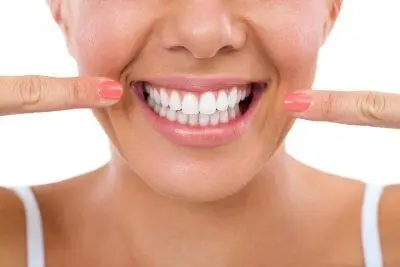Teeth Bleaching Tulsa, OK
Teeth bleaching, sometimes called “internal bleaching,” is a more effective approach to teeth whitening.

Using more powerful whiteners that are designed to penetrate more deeply into the teeth, teeth bleaching achieves more dramatic results that you can maintain for long-term brilliance of your teeth.
If you have tried other teeth whitening approaches but haven’t been happy with the results, then maybe you should try teeth bleaching in Tulsa. To learn more about this alternative process, please call (918) 528-3330 today for an appointment with a cosmetic dentist at élan Tulsa Cosmetic Dentistry.
When You Might Need Teeth Bleaching
More common teeth whitening procedures work well for common types of tooth discoloration. Normal food staining typically responds well to teeth whitening. But there are some kinds of discoloration that may not respond well to teeth whitening. These include:
- Smoking stains from a long-term habit
- Tetracycline stains
- Fluorosis
- White lesions related to braces
- Enamel defects
- Tooth discoloration from trauma
If you’ve tried teeth whitening for any of these problems but have been unhappy with the results, it’s time you tried teeth bleaching.

How Teeth Bleaching Works
Before we begin teeth bleaching, we will evaluate your oral health and make sure your teeth will benefit from bleaching and don’t need additional procedures such as root canal therapy (infected teeth can turn dark in color and won’t respond to bleaching).
Teeth bleaching is an at-home teeth whitening approach. It benefits from the long-term contact with your teeth. You will receive custom whitening trays that are designed to fit snugly against your teeth. This keeps the whitening gel on your teeth from being diluted by saliva. It also keeps the gel off your gums, which can lead to gum irritation and recession.
The teeth whitening gel is a very strong concentration whitener, and the tooth’s natural ability to absorb oxygen draws the peroxide deep into the tooth. This whitens the tooth by dissolving stain molecules. The broken-down stains wash out.
You will use the whitener every night at first to bleach your teeth. Once your teeth reach the color you desire, you can switch to a maintenance program where you only use the whitener occasionally.
The Whitest Your Teeth Can Be
Your tooth enamel has a certain color, and it won’t bleach beyond that color. While other whiteners might leave deep stains untouched, internal bleaching really gets at the deepest stains so that your teeth can get their maximum whiteness. But they won’t be too white–they’ll still look natural.
If your teeth still aren’t white enough, possibly because of thin enamel or enamel defects, porcelain veneers can be used to achieve the whiteness you desire.
Avoid Discomfort
One of the benefits of getting teeth whitening done at the dentist is that you can avoid sensitivity. It’s common for people using over-the-counter teeth whiteners to experience sensitivity.
But if you start to get sensitive when you’re getting internal bleaching, we can adjust the formula or offer treatments to stop the sensitivity. That way, you can enjoy bright white teeth with no sensitivity.
Do you think you’re ready to get your whitest teeth? Please call (918) 528-3330 today for an appointment at élan Tulsa Cosmetic Dentistry in Tulsa.

élan Tulsa Cosmetic Dentistry
10031 S Yale Ave #104
Tulsa, OK 74137

